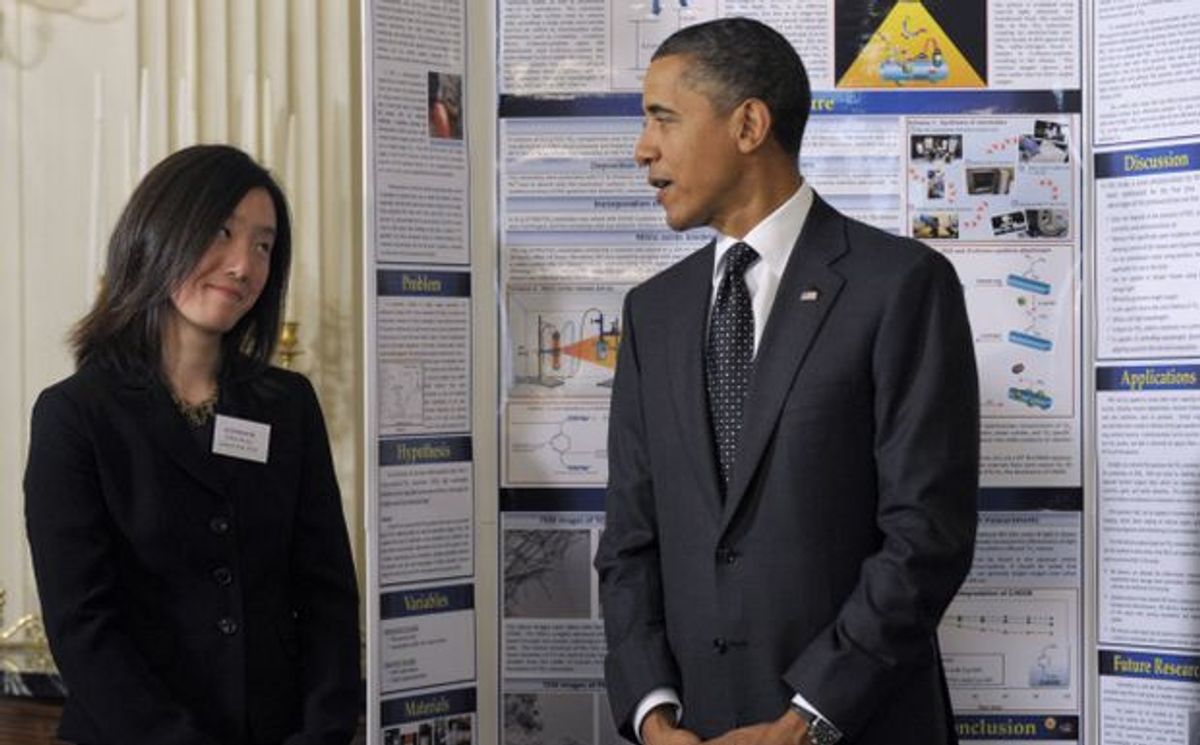No doubt Ms. Chyao’s presence was a bit of stage craft to underscore the future of America’s ingenuity and innovation because Ms. Chyao, who is still a high school junior, managed to synthesize a nanoparticle that when exposed to infrared light even when it is inside the body can be triggered like a bomb to kill cancer cells. Ms. Chyao performed her research and synthesis in the lab of Kenneth J. Balkus, Jr., a chemistry professor at the University of Texas at Dallas.
This is a remarkable achievement and even more so from someone still so young, so we would have to agree with Prof. Balkus’ assessment that “At some point in her future, she’ll be a star.”
However, Chyao was given to us as a shining example of the US potential for innovation, and, as a result, its competitiveness. So beyond stage craft, what is the assessment of innovation for the US in a time of emerging technologies such as nanotechnology?
As President Obama attempts to rally the nation with “This is our Sputnik moment”, Andrew Maynard over on his 20/20 blog tries to work out what innovation means in our current context as compared to what it meant 50 years ago at the dawn of the space race.
The problems we now face as Maynard points “are increasingly complex technologies and a vastly more interconnected world” that have forever changed “the dynamic between having a good idea and coming up with a sustainable solution.”
According to Maynard, technology innovation has to be re-examined so at least we have the tools, institutions and understanding of how to do it effectively and efficiently in this new context.
I have touched on the themes of the paper previously here on this blog when the two authors were first arguing their idea at The Summit of the Global Agenda at the annual World Economic Forum Meeting in Dubai back in 2009.
The ideas struck me then, and have increased since, as being the kind of ideas that you stop and ask yourself: “Why didn’t I think of that?”
In other words, they’re the kind of ideas that will meet more than their fair share of resistance for the simple reason that many will believe that if they didn’t actually think of it themselves, they should have.
For me, the key issue Harper and Maynard address is that we all acknowledge that we have some major issues that we need to address (energy, food, water) and often technology is held out as some kind of savior in solving them. But we allow the technology that we need to be held up by the vagaries of the markets and the profits and interests of a handful of people. Maybe we should examine establishing a framework by which it is more likely that the technologies we need are developed rather than just those that might best turn a profit.
While maintaining the status quo may temporarily lead us to greater competitiveness, it will hardly matter if we can’t find some way to ensure that the technologies we need get developed just as vigorously and swiftly as those that promise the biggest profit margins.
Dexter Johnson is a contributing editor at IEEE Spectrum, with a focus on nanotechnology.





